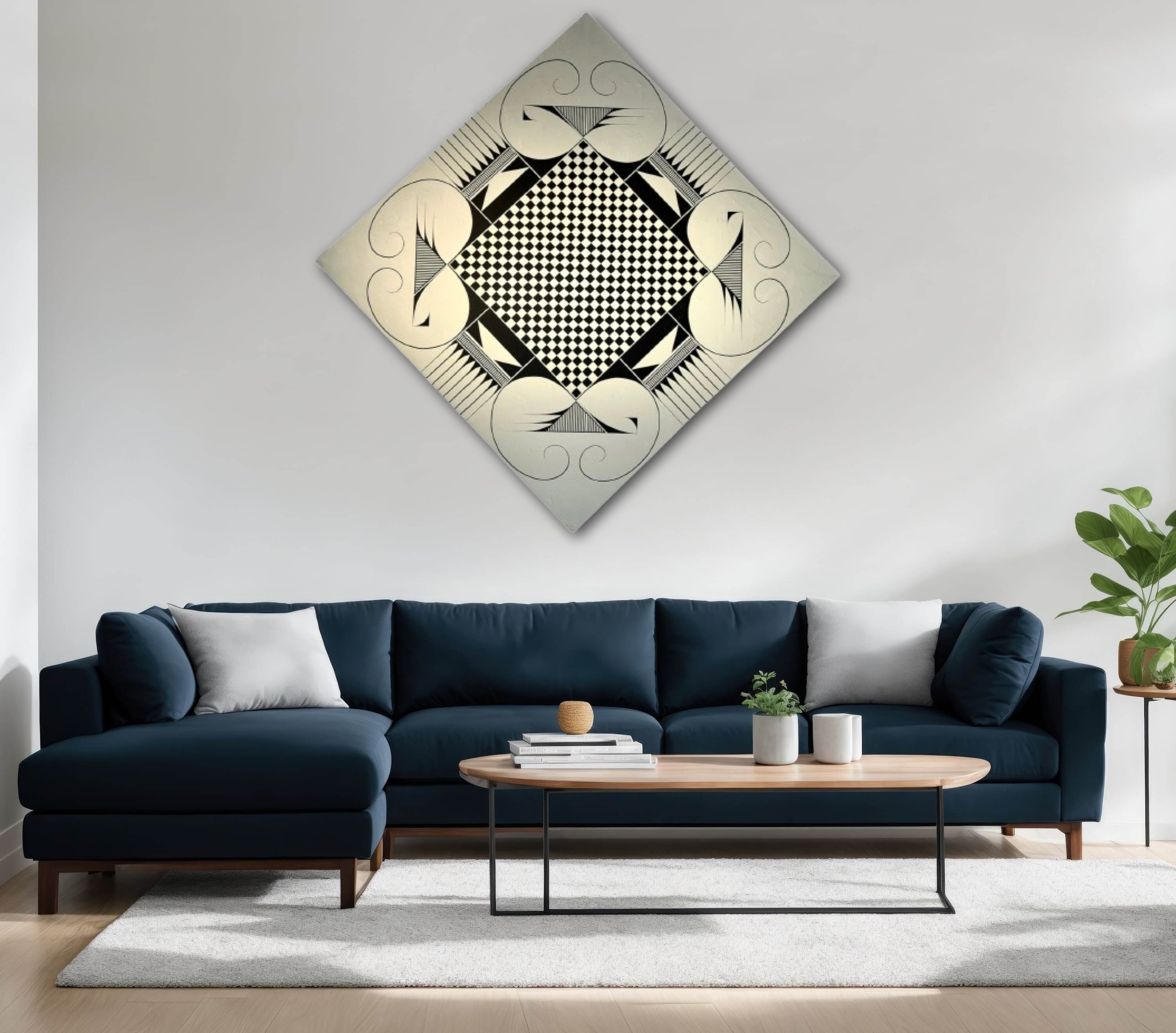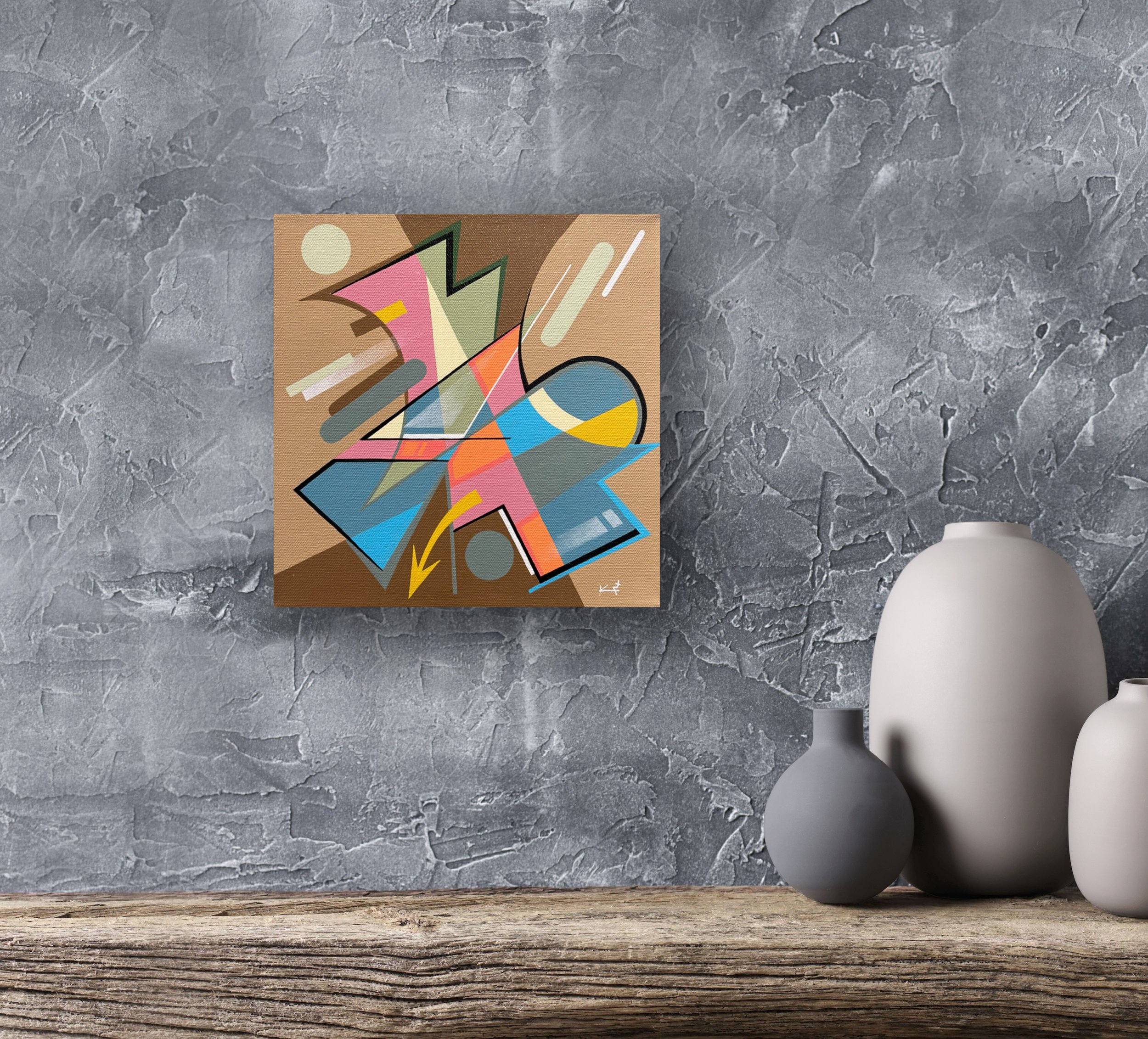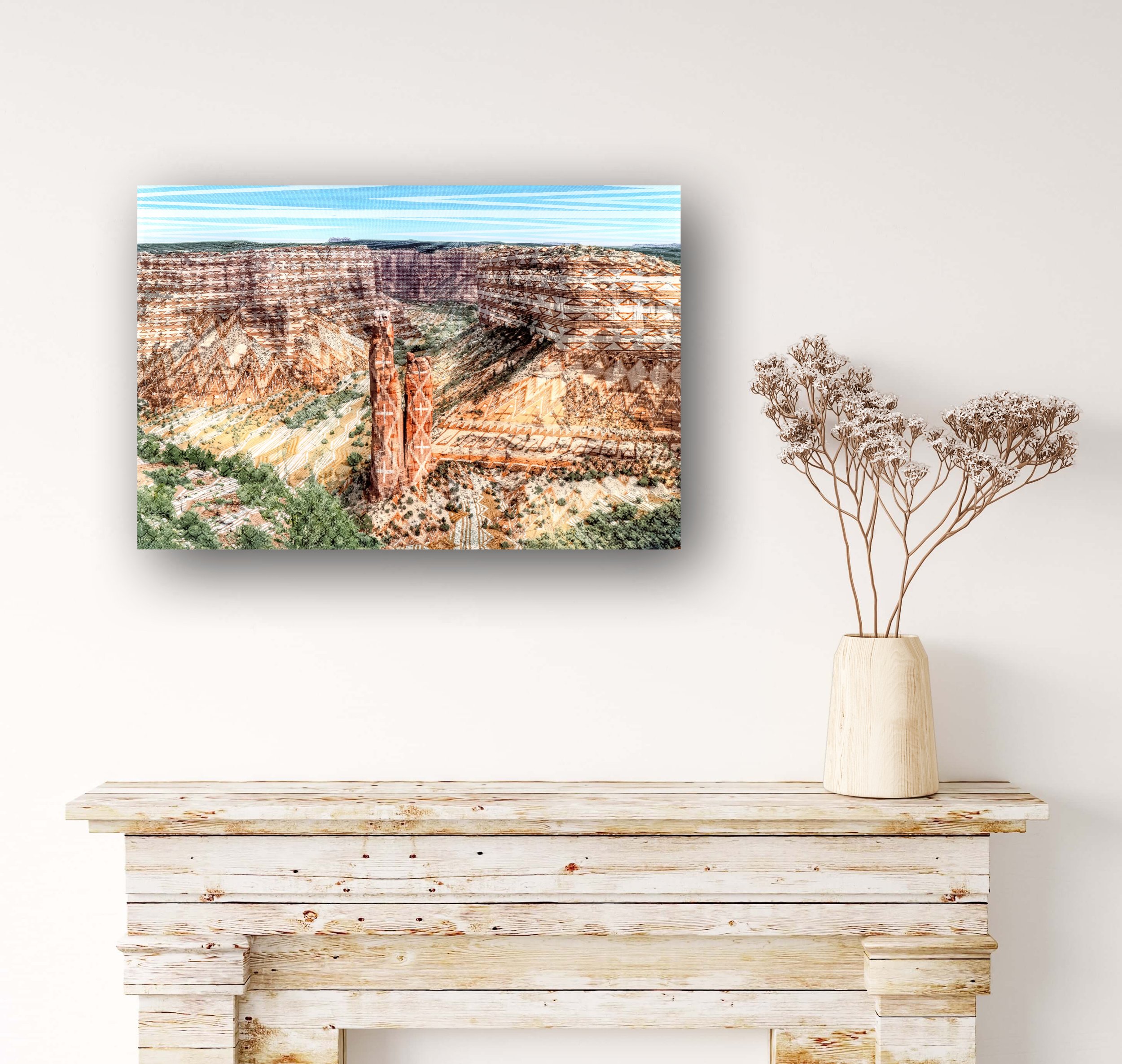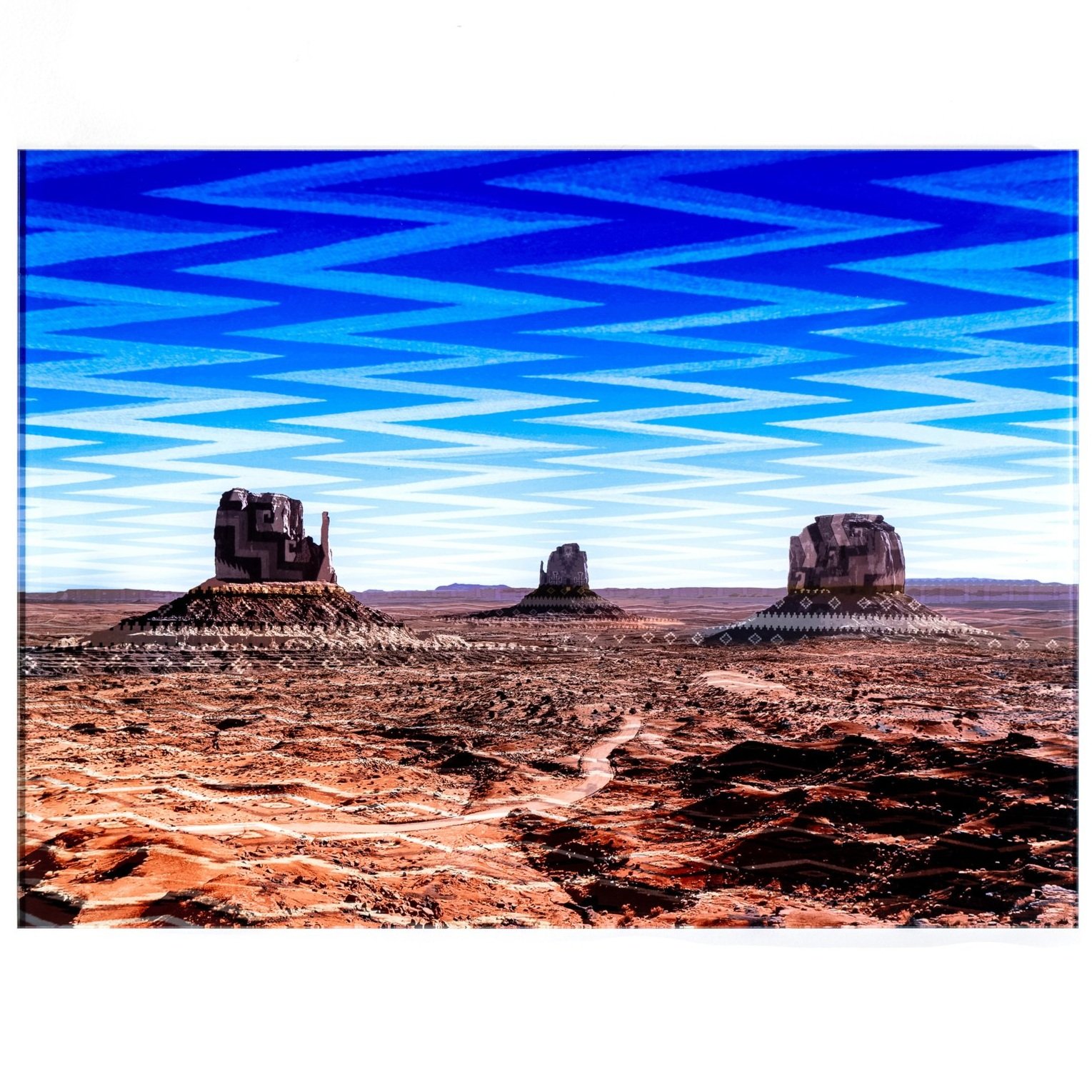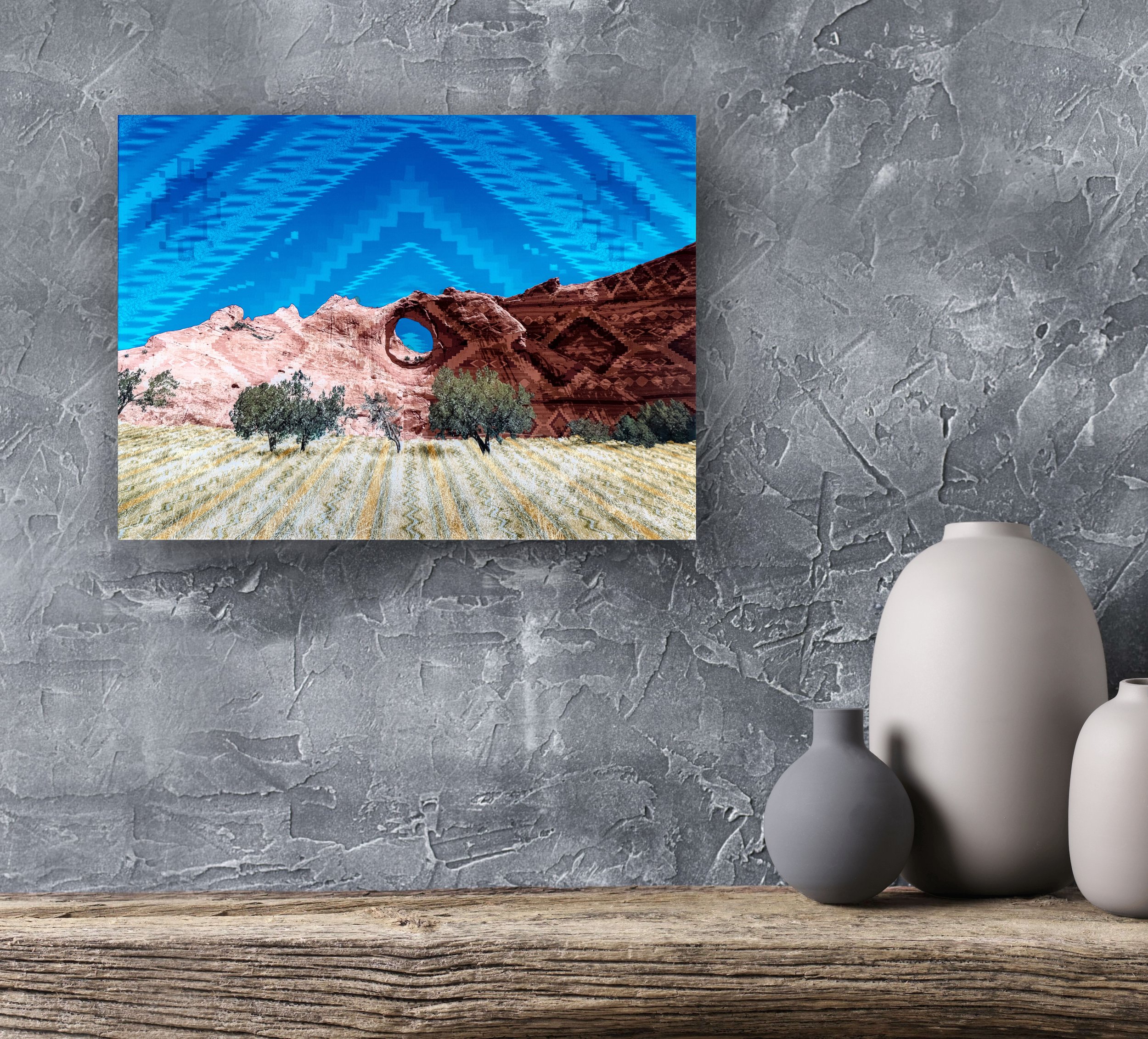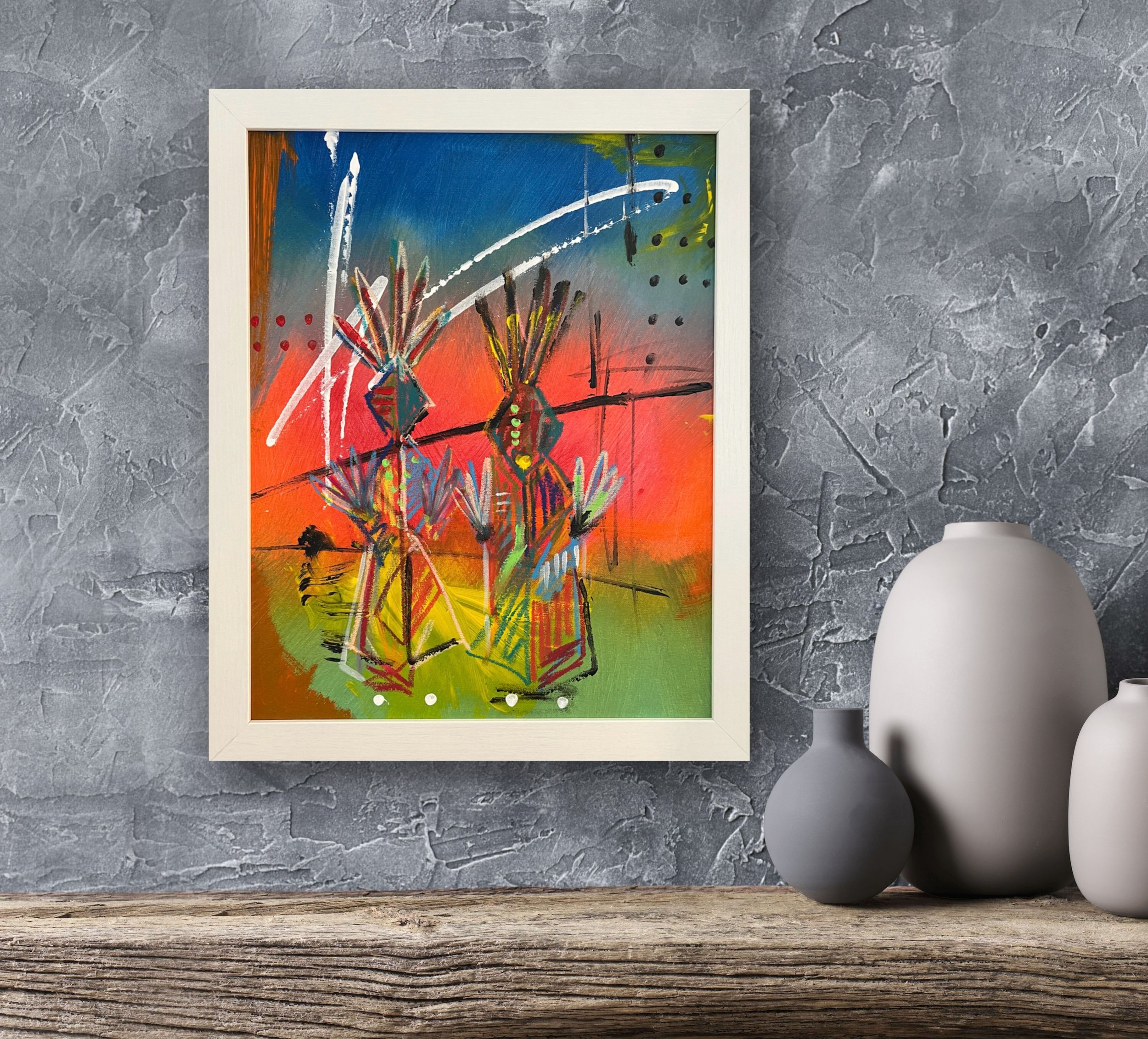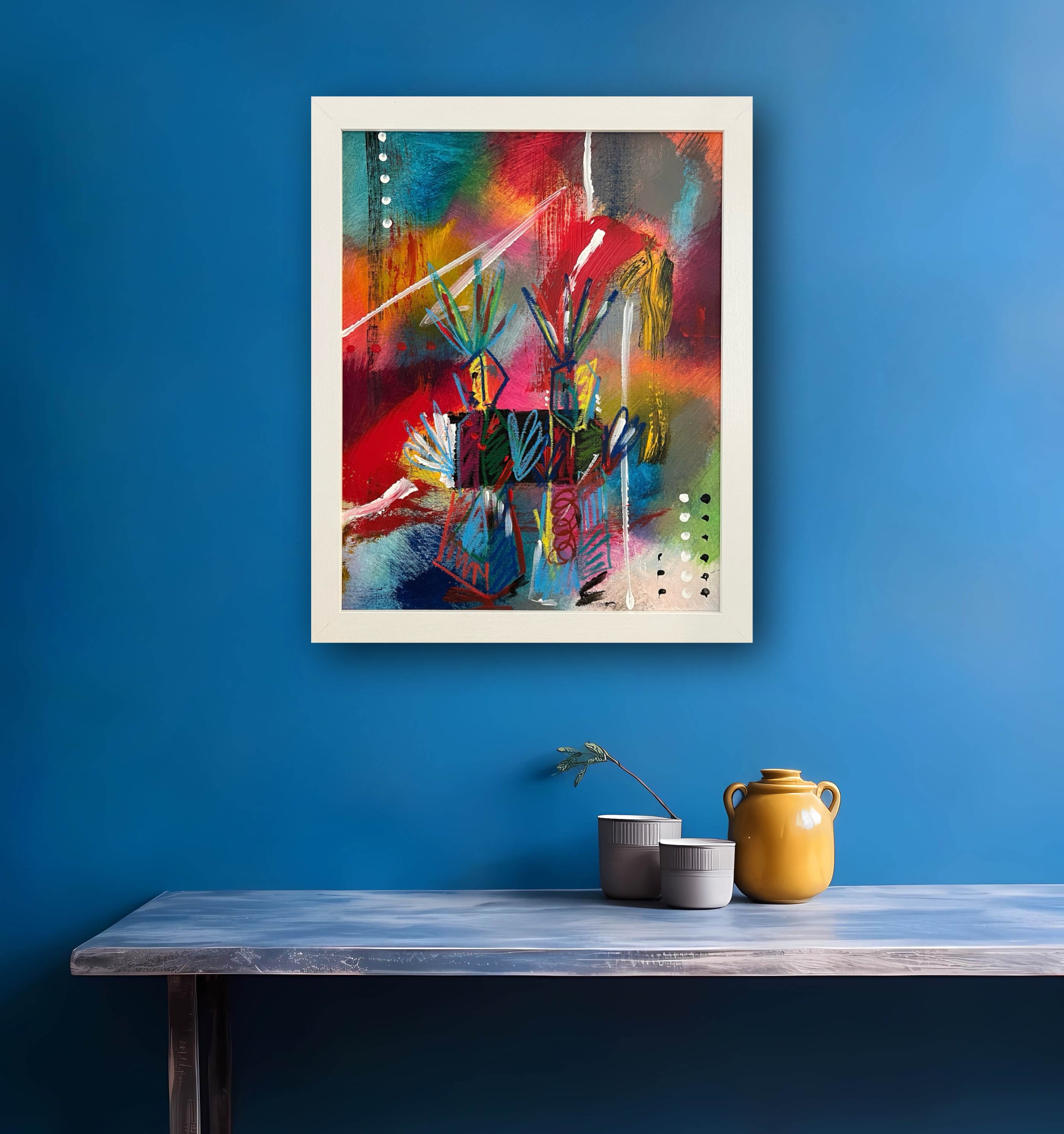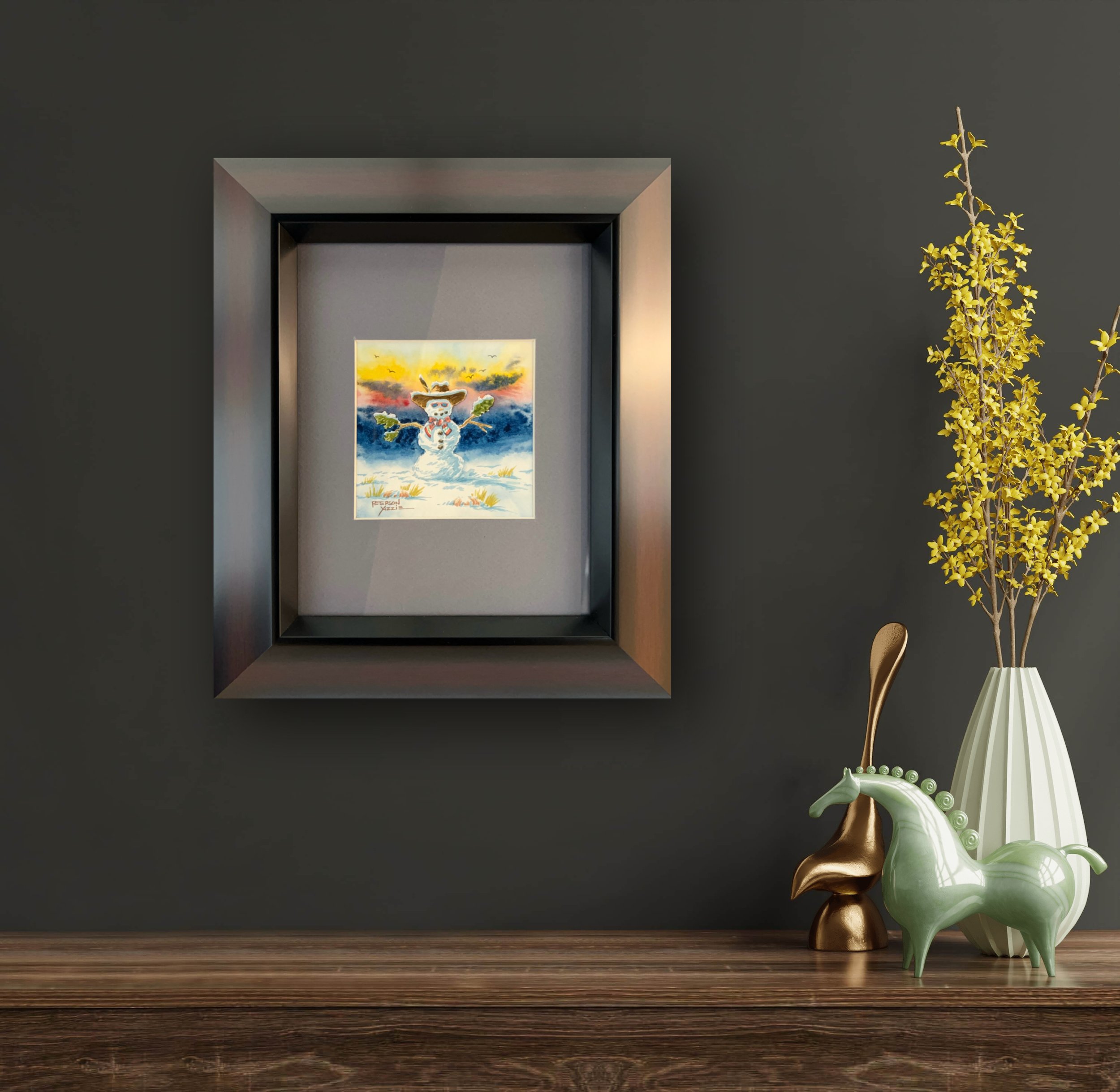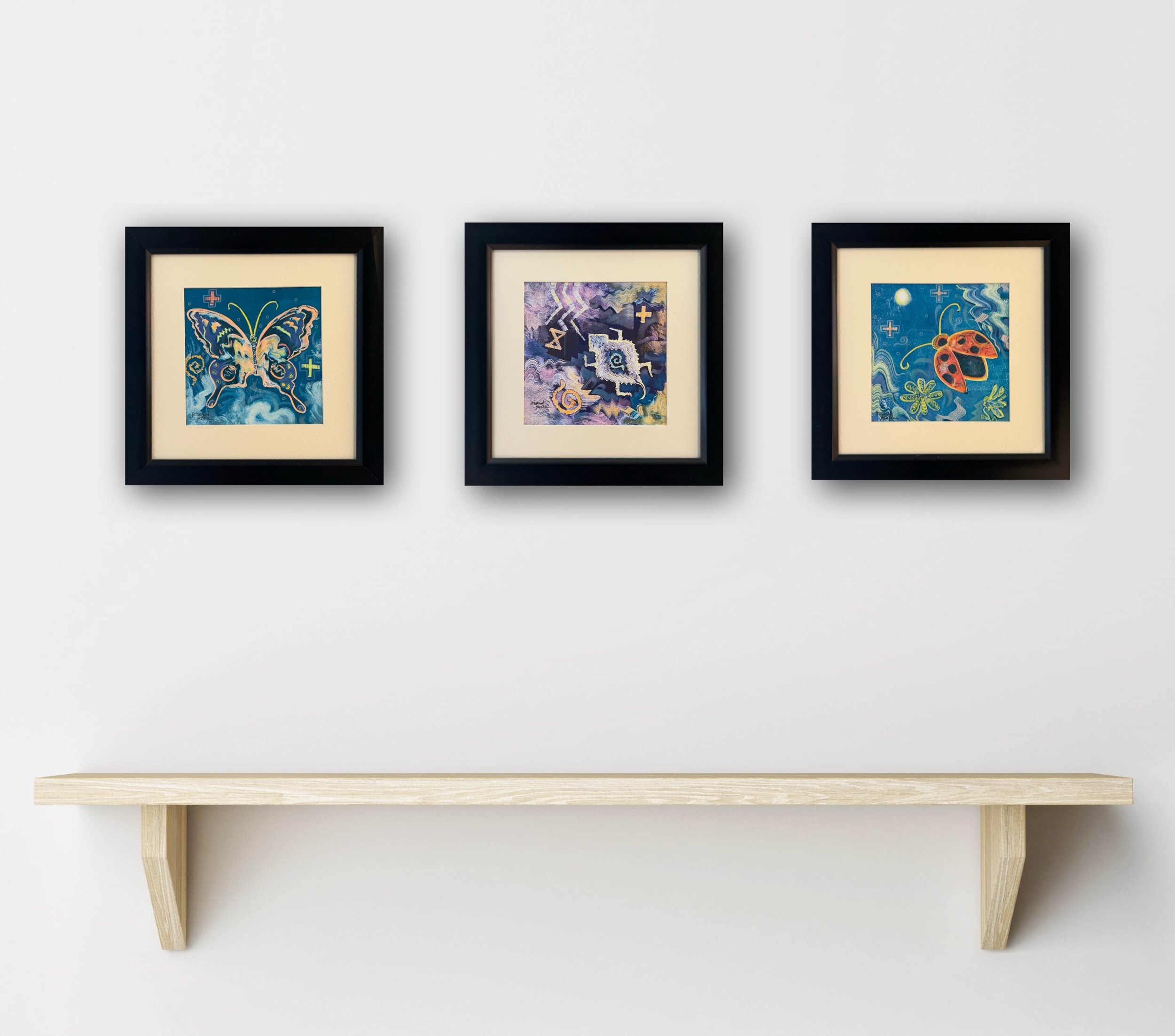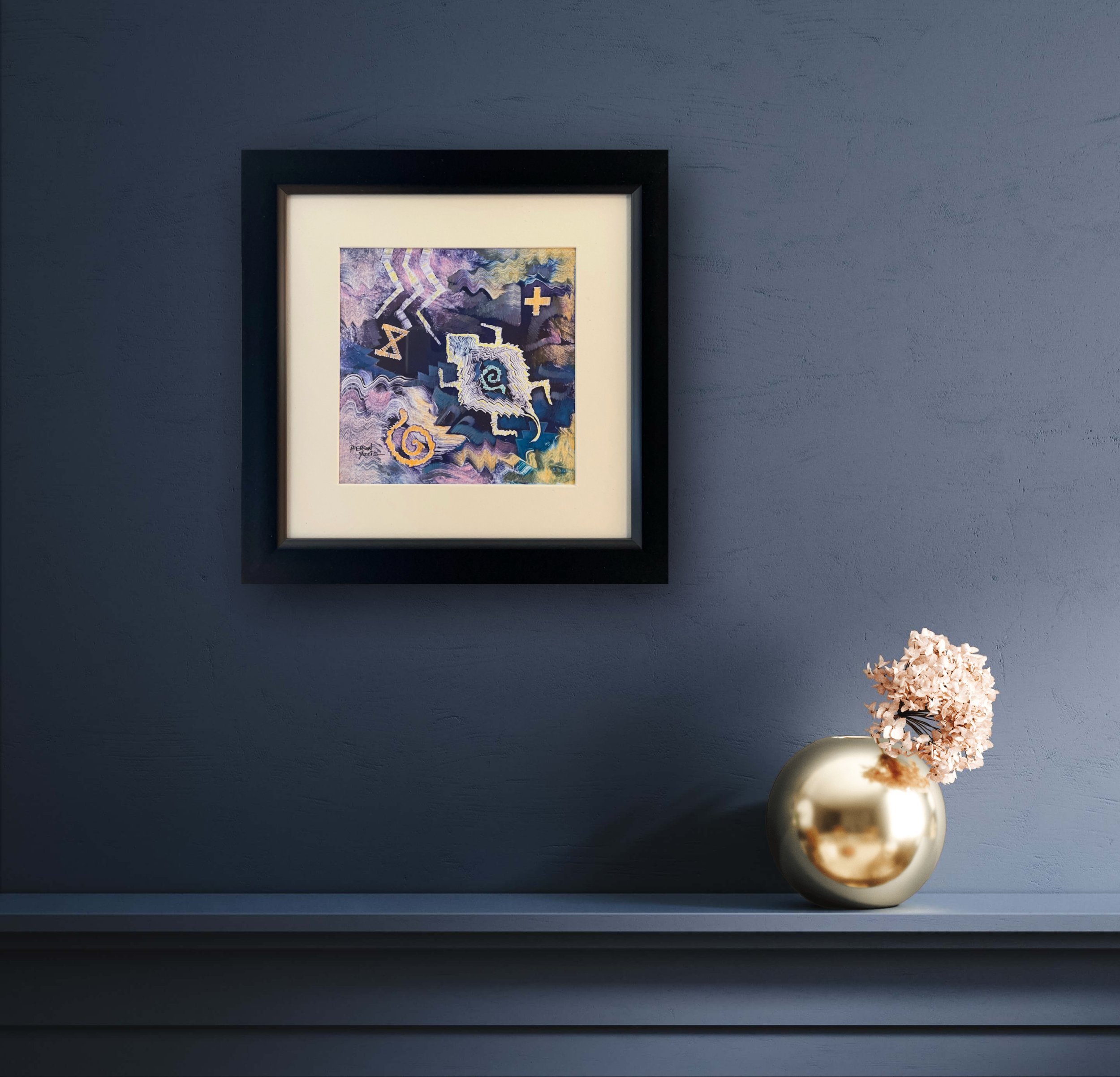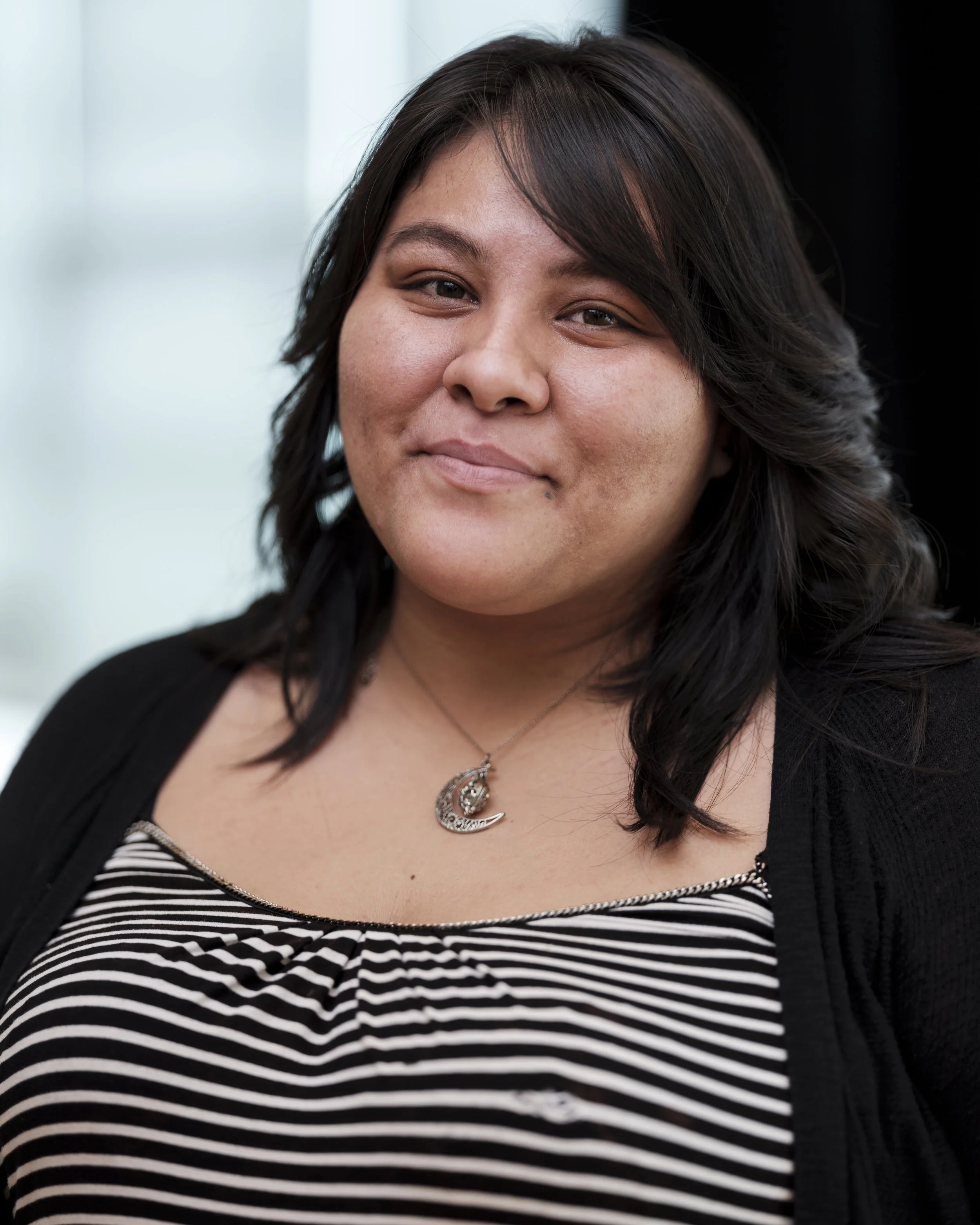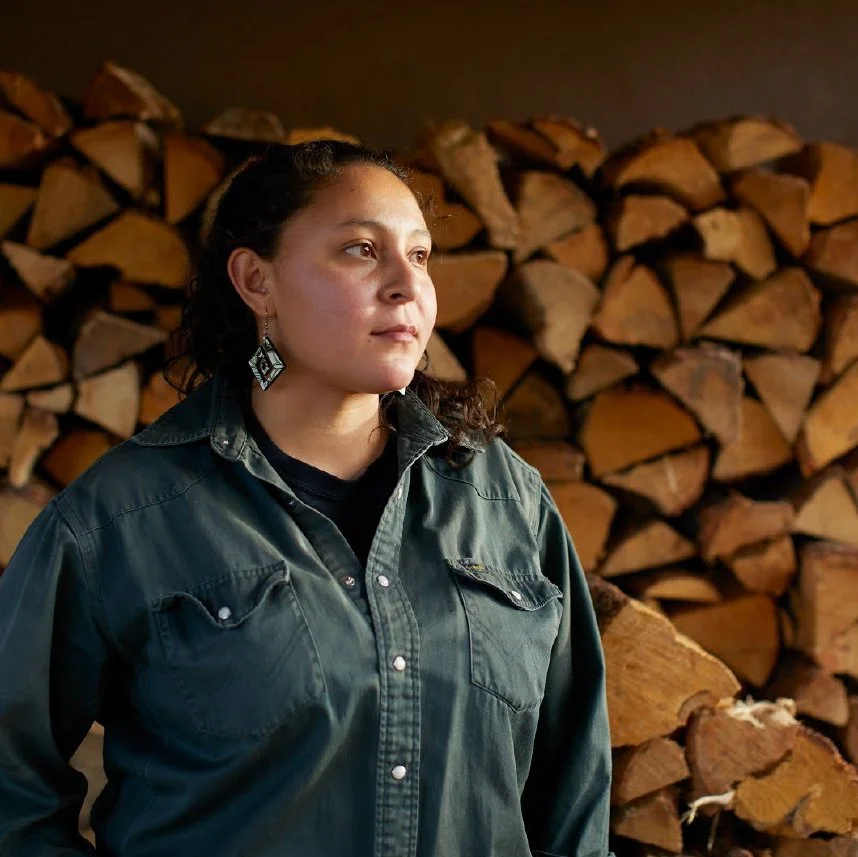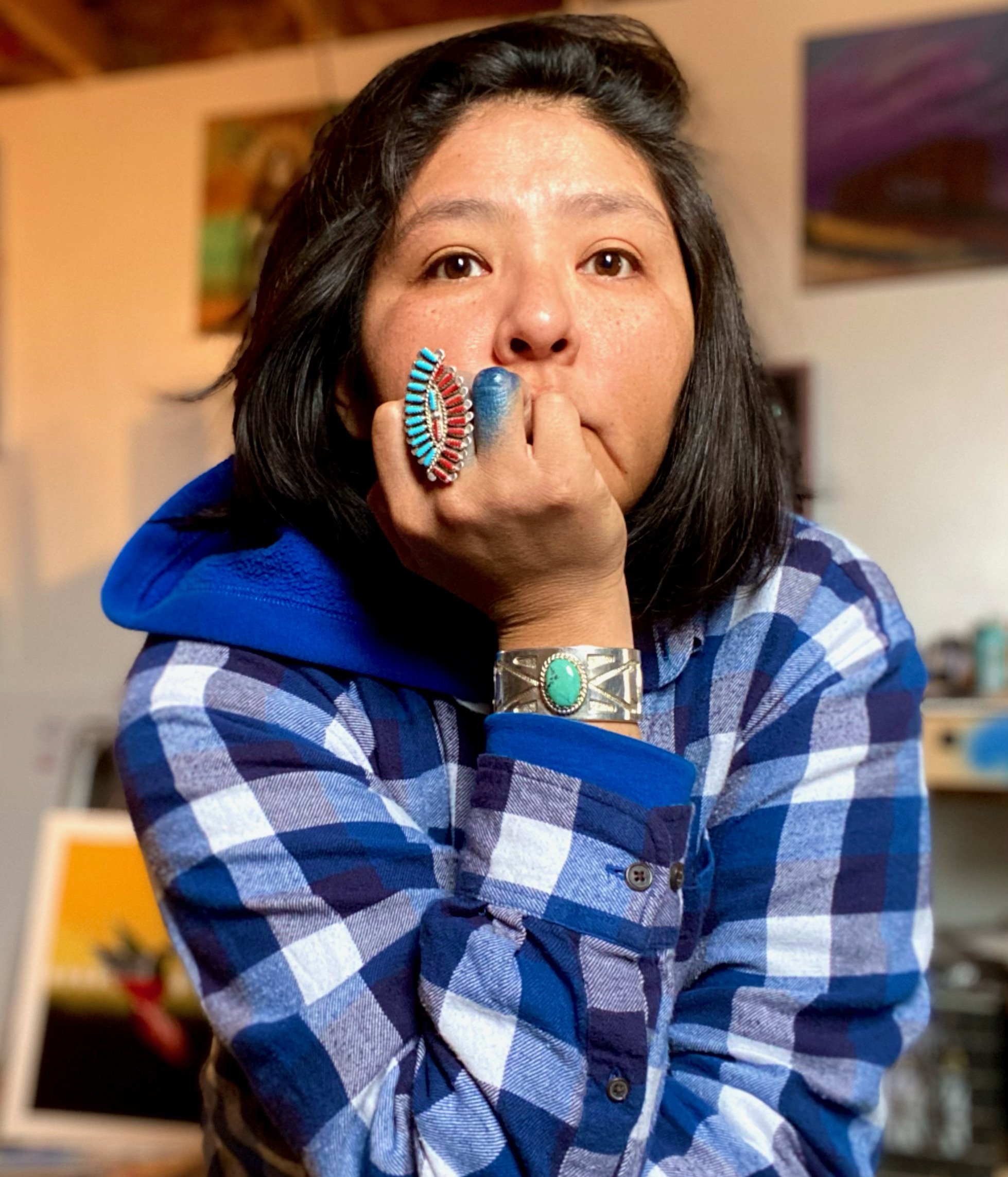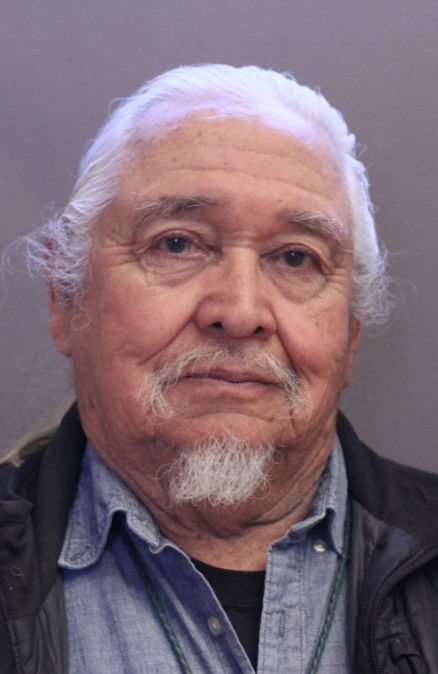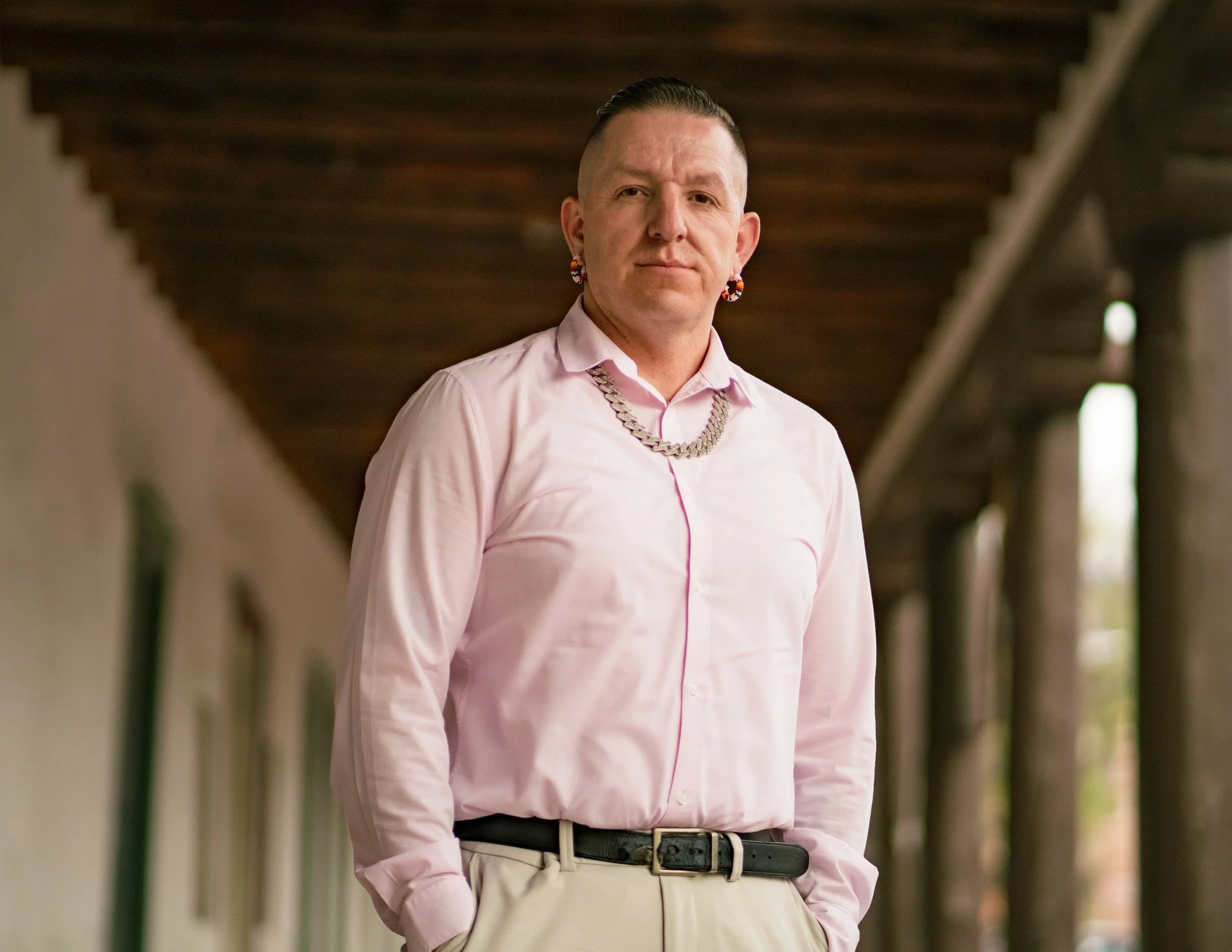
Holiday Cheer
As 2023 closes, Gallery Hózhó celebrates this winter season with our Holiday Cheer show featuring paintings, prints, and sculptures by Chelsea A. Benally, Avis Charley, Bryson Goodrunner, Bob Haozous, Duhon James, Kurt Lomawaima, David A. Naranjo, Darby Raymond-Overstreet, A. Thompson, Vicente Telles, and Peterson Yazzie. Be sure to stop by and see the works before the show closes on January 31, 2024.
Avis Charley
I create figurative drawings and paintings that explore our evolving Native American identity from pre-reservation period to the present day, from ancestral homelands to city life. I began my career with drawings on antique paper and used the female form as my main subject. Dakota people used pictorial images for hundreds of generations and used plant and mineral pigments to document our history on buffalo hides. "Ledger Art '' began as a male-dominated art form invented by my ancestors who were imprisoned far from our homelands. Colored pencils, crayons, and pages from discarded ledger books were adapted by folks such as Howling Wolf, Black Hawk, and many others to remember and document the masculine aspects of culture, depicting stories of hunting, fighting, and courting scenes. As a female ledger artist, I share stories of parenting, family, and community. My dynamic figures come alive and engage us with their humanity. They are empowered with bold colors and intricate details in their adornment as they assert their presence, narrative, and strength. I eventually transitioned from Prisma colored pencils to oil paintings. I wanted to start portraying Indigenous women in modern settings celebrating resistance to assimilation and colonization with vibrant hues and details not possible in my ledger pieces. I aim to give voice to and center contemporary Native people by portraying how we continue to survive and thrive while maintaining cultural ties through our persistence and existence. This manifests itself in many ways, including our artistry, powwow culture, language work, returning home for traditional ceremonies, or participation in the growing activism in Indian Country. These are a few avenues that we might take to engage and remain connected to our communities. I am interested in the present moment and enjoy documenting our stories and experiences for future generations. The message I seek to communicate is that despite the tragedy in our collective history as Native people, the strength and resiliency derived from our Indigenous matriarchs, sisters, and daughters is what keeps us moving forward and inspiring others.
Bryson Goodrunner
I focus on printmaking and graphic design. I combine the two, because I utilize the designs created on the computer and print them myself; these are a combination of past and present printing because historically, printers produced their own designs on woodblock and stone and the utilization of computers today are also a way to print. This is important to me because I practice both ways, especially going from graphic design to physically printing patterns. The textile designs and florals are symbols from the northern tribes around the region I grew up. These are both driven by history, stories, and traditional gatherings. We would tell stories with some of these designs. The designs come from Cree, Dakota, Lakota and Ojibwe. My choices of placement and colors make them contemporary pieces.
Duhon James
My name is Duhon James, I am Water’s Edge clan, born for the Bitter Water Clan, from Ganado, AZ. In Spring 2014, I graduated with a Bachelor of Fine Arts in Studio Arts from the Institute of American Indian Arts. The visual I have about how the sun, land, and clouds create colors as they engage life is a stopping moment, where you realize how their colors play. Creating these linoleum block prints, is a way for me to create a life form and evolving cycles with water, stars, corn, and mountains. Also, having a textile expression of it representing our elders, who have created different rugs throughout their lives. Keeping it simple does play a role in my community of the Ganado Red rug and interrupting and approaching it differently with stars, a mountain, and a hogan. My artworks visualize the Navajo lifestyle and include a rotating cast of stars, corn, textile, Hogan, and the universe. I would like to acknowledge every elder who has brought every one of us into this world. They are still teaching us, of what it means to be here, and to understand what they are passing onto us.
Kurt Lomawaima
My work explores the relationship between a Hopi upbringing and living in a Westernized world. With diverse influences coming from renowned Hopi and European artists, new variations are created to show both the complexities and simplicities of living in two different worlds. Growing up I have been fascinated by the mythical and realism of Hopi ideology. It created an endless oscillation of the mind. What starts out as magic ends up embracing the understanding that Hopi is art in itself. As abstract forms shift to convey a realistic way of life, the viewer is left with an inspired insight into the world of Hopi.
David Naranjo
When approaching any work (past or present), I appreciate the connectivity it has with viewers. How one image can bring back a memory or remind someone of their own home. I look at my work as a collection of different perspectives, thus leading to different angles, lighting, color, and depth of field. I’ve been working with the idea of color and lighting for years and whenever I create new work or revisit old ones, I explore my options of how I can create a different world, a different perspective. The work I share are examples of the different vantage point I experience with landscape almost on a daily basis while living on the reservation: sunsets, sunrise, starry nights, leading lines, and change of seasons. The universe is always changing and I feel my work is always changing as well, which leads to new ideas. These works are a map of my existence: the colors you see, the mountains you see, the shadows you see, are all fragments that are important to me because they exist. In this, my work is more than an image, it’s a beautiful piece of a reflection of how I see the world and how the world sees me.
Darby Raymond- Overstreet
As a Diné artist, working with patterns is the most illuminating way for me to explore and expand my understanding of the world. Much of my work is about identity. I’m interested in how cultural practices of art influence and inform collective identity, and how our relationships to our ancestries, our contemporaries, and our descendants culminate to define personal identities and perspectives. As a digital artist, I create cultural portraits that describe modern day Diné in the visual language of our heritage. I merge the artistry of traditional woven textiles into the format and medium of digital art, and suspend the works in traditional looms. These works emulate the duality of Indigenous traditionalism and the adaptation to western society that shapes much of today’s Diné experience. I use woven patterns in my portraits as a way of both reclaiming and celebrating our visual cultural aesthetic. Prompted by rampant cultural appropriation by corporate industries, I find it an apt response to show who these designs come from and for whom they were made. The works also serve as an homage to weavers and the practice of weaving itself. As a printmaker, I explore what it means to be a part of something and how identity is formed. Coming from a mixed racial background, my identity has often been explained and understood by others in terms of parts, but I don’t experience my identity in parts. I experience the wholeness of myself through the relationships that I have to my kin. So to examine this feeling of wholeness I create arrangements of pattern designs, cut them apart, and splice them together in compositions that through the process become something different yet whole again. Each individual piece takes on its own particular meaning, usually, relating to place, emotion, and memory.
Vicente Telles
The creation of each piece begins with the collecting of pigment; deposits of yellow ochre in the mountains and caves of central New Mexico and micaceous clay pits found in the mountains of northern New Mexico. Preparing and getting the clays and ochres into final application consistency occurs only after the proper separation of non-pigmented soils, rocks, sand, twigs then, mulling occurs. Visual and written history has given me the necessary understanding to tell my own story of the traditional New Mexican retablo with color, materials and techniques. Both those developed in 18thcentury New Mexico and modern. I create work to solidify my relationship with culture, heritage and identity. I continuously educate myself in order to contribute to the constantly developing traditions. A strong base in the traditional methods of retablo making has allowed me to move my work forward, using contemporary and traditional materials and iconographic experiences. In my current body of work, I combine the traditional techniques of using mineral pigments/watercolors with high quality hand pulled paper, and fabrics to make a piece that speaks both to the tradition and to the contemporary. I study and interpret the use of designs from other disciplines i.e. tin work, furniture making and incorporate them into the creation of my work. I make use of and turn the “cut-out” and paper/fabric accent designs used in New Mexican tin work. The use of scallops ,step designs, altar construction are characteristics interpreted and adapted from tradition of furniture making. Every aspect of my work is consistent with my culture, both in its infancy and as it exist today.
Peterson Yazzie
My art is informed by my personal experiences and surroundings, through process and experimentation. I approach each art piece with an open mind, I find art more exciting if it guides me. Life is filled with positive and negative energies; my art provides the balance to keep me focused and in tune with the world around me. Art continues to connect me with amazing people throughout the world, I am forever thankful.
Bob Haozous
Born in 1943 in Los Angeles, Bob Haozous is known for working in a range of media, from drawing, painting, and printmaking to jewelry, but his primary focus is on sculpture, especially monumental public works. He sculpts in steel, stone, wood, and aluminum. His work is often humorous and extremely politically charged. He creates work about his Apache heritage, the environment–especially climate change–and institutional racism. His parents, Anna Marie Gallegos, a Navajo-Mestiza textile artist, and the late Allan Houser (1914–1994), a famous Apache sculptor, instilled a passion for the arts. His parents both taught at Intermountain Indian School, in Brigham City, Utah. Haozous studied at Utah State University before enlisting in the US Navy, where he served for four years on board of the USS Frank Knox during the Vietnam War. After the war, Haozous attended the California College of Arts and Crafts in Oakland, California, where he earned his BFA degree in sculpture in 1971.
Chelsea Benally
I am inspired by everyday life experiences to express my portraits. I express their individual values and uniqueness by applying both photography and painting. Photographing a person is a very personal experience for the sitter, requiring that they are are vulnerable and exposed. Whilst photographing them, you begin to establish a relation and perception of and with that person(s). Within the elements of painting, I use color, texture, and brush techniques to communicate both realistic and abstractly a wide range of emotions.
A. Thompson
We spend a day in all the wonderful creations this life offers and as an artist we want to make the unknown seen. We want to bring forth the under layer of what is also almost demised. That is the thing about art, it is simple but also a huge book of confusion and that is where I want my art to be. I want you to look at my work and question both its light and dark, its joy and hatred, its death and life. Most of the art is coming from an emotion of anger, understanding, comfort and piece. These works are a reminder that we’re allowed as humans to freely and truly express in many foams durning incredible harsh times. We can strive with our culture, we can survive with are stories, we can live and move forward with our own power.









